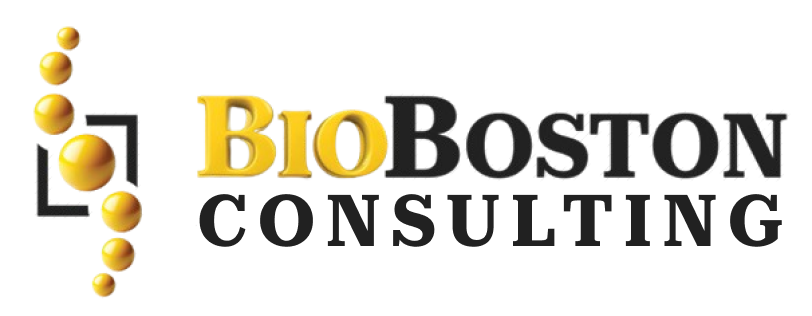Maximize Your Pharma/Biopharma Risk Assessment with Expert Guidance
Risk assessment is a cornerstone of quality management in the pharmaceutical and biopharmaceutical industries. With the publication of ICH Q9 in 2005, Quality Risk Management (QRM) has become a critical part of regulatory frameworks, helping organizations ensure product quality and patient safety. At BioBoston Consulting, we specialize in risk management strategies tailored to your needs, leveraging both formal and informal risk assessment tools.The Importance of Risk Assessment in Pharma/Biopharma
In the healthcare and pharmaceutical sectors, risk is defined as the likelihood of harm occurring and its severity. The objective of any risk assessment is to identify, analyze, and evaluate potential risks, particularly those that could impact patient safety. ICH Q9 emphasizes that risk evaluation should be rooted in scientific knowledge and linked directly to protecting the patient.
Formal Risk Assessment Methods
At BioBoston Consulting, we understand the importance of selecting the right risk assessment methods for your specific situation. Here is a breakdown of the most commonly used formal risk assessment tools in the pharma and biopharma industries:
- Failure Mode Effects Analysis (FMEA)
A detailed approach to identifying failure modes, evaluating potential effects, and assessing the need for controls.
- Failure Mode, Effects, and Criticality Analysis (FMECA)
An extension of FMEA that evaluates not only failure modes and effects but also the criticality of each failure.
- Fault Tree Analysis (FTA)
A top-down approach to identifying causes of system failures, useful for complex systems with multiple failure paths.
- Hazard Analysis and Critical Control Points (HACCP)
Primarily used in food safety but also applicable in pharma to assess the points where failure could lead to patient harm.
- Hazard Operability Analysis (HAZOP)
A structured method for identifying hazards in processes, typically used in manufacturing and utilities.
- Preliminary Hazard Analysis (PHA)
A quicker, high-level risk analysis typically performed early in the development process.
- Risk Ranking and Filtering
A simpler method for prioritizing risks based on their severity and probability.
Informal Risk Assessment Tools
While formal methods such as FMEA and FMECA are commonly used, informal methods can also provide valuable insights and complement formal assessments. These tools include:
- Brainstorming
- Impact Assessments
- Technical Evaluations
- Statistical Tools
While informal methods are not replacements for formal risk assessments, they are useful in identifying potential risks early in the process and providing additional context for complex systems or decisions.
Choosing the Right Risk Assessment Method
The principles of Q9 highlight that the level of risk assessment effort and documentation should align with the level of risk involved. Not all situations require extensive, resource-intensive methods like FMEA/FMECA. For simpler or well-understood scenarios, less formal tools may be more effective and cost-efficient. Here is how you can evaluate the pros and cons of commonly risk assessment methods:
| Risk Assessment Method | Pros | Cons |
| FMEA | Detailed identification of failure modes and controls. Establishes basis for system design elements. | Resource/time-intensive. Requires skilled facilitators. May be overkill for less critical situations. |
| Impact Assessment | Quickly separates GMP vs. non-GMP systems. Accepted by regulators. High-level risk identification. | Does not identify specific risks or evaluate controls in detail. Not as granular as FMEA/FMECA. |
| Technical Evaluations | SME-driven, very process/application specific. Requires fewer resources. | Can be inconsistent in execution/documentation. May not be recognized as a formal risk assessment by regulators. |
How BioBoston Consulting Can Help
Choosing the right risk assessment method can save your organization time, resources, and costs while improving regulatory compliance and quality assurance. At BioBoston Consulting, we bring decades of experience in guiding pharmaceutical and biopharmaceutical organizations through complex risk assessments.
Whether you need assistance with formal risk assessments like FMEA or FMECA, or require more informal technical evaluations and impact assessments, our team provides tailored solutions to match your specific needs.
The BioBoston Consulting Advantage
We offer end-to-end support for Quality Risk Management and regulatory compliance. Our services include:
- Risk Assessment Method Selection
- Regulatory Compliance Support
- C&Q Planning and Execution
- Validation Master Plans
- Requirement Specifications (URS/FRS/DS)
- Risk Assessments and Traceability Matrices
- IQ/OQ/PQ Protocols
- Turnover Packages
- Summary Reports
Our consultants ensure that you apply the right risk assessment methods at every stage of your project to safeguard both product quality and patient safety.
Ready to Optimize Your Risk Assessment Process?
Contact BioBoston Consulting today to learn more about how we can help streamline your Quality Risk Management efforts. Let us guide you in selecting the most effective risk assessment tools, ensuring compliance, and supporting the safety and quality of your products from start to finish.
Reach out to BioBoston Consulting now to start optimizing your risk management strategy. Ensure the best possible outcomes with expert risk assessments and regulatory compliance from BioBoston Consulting.

